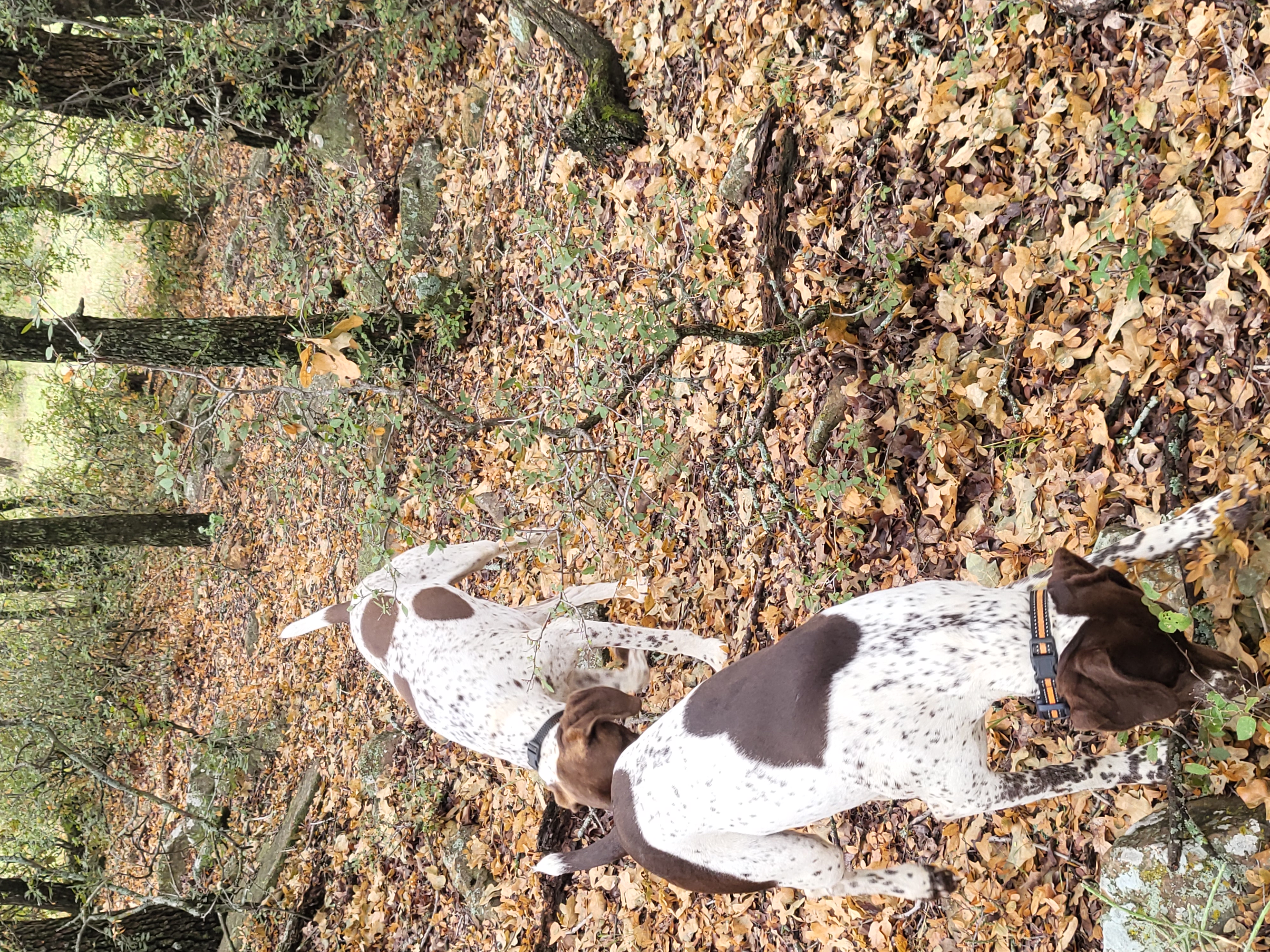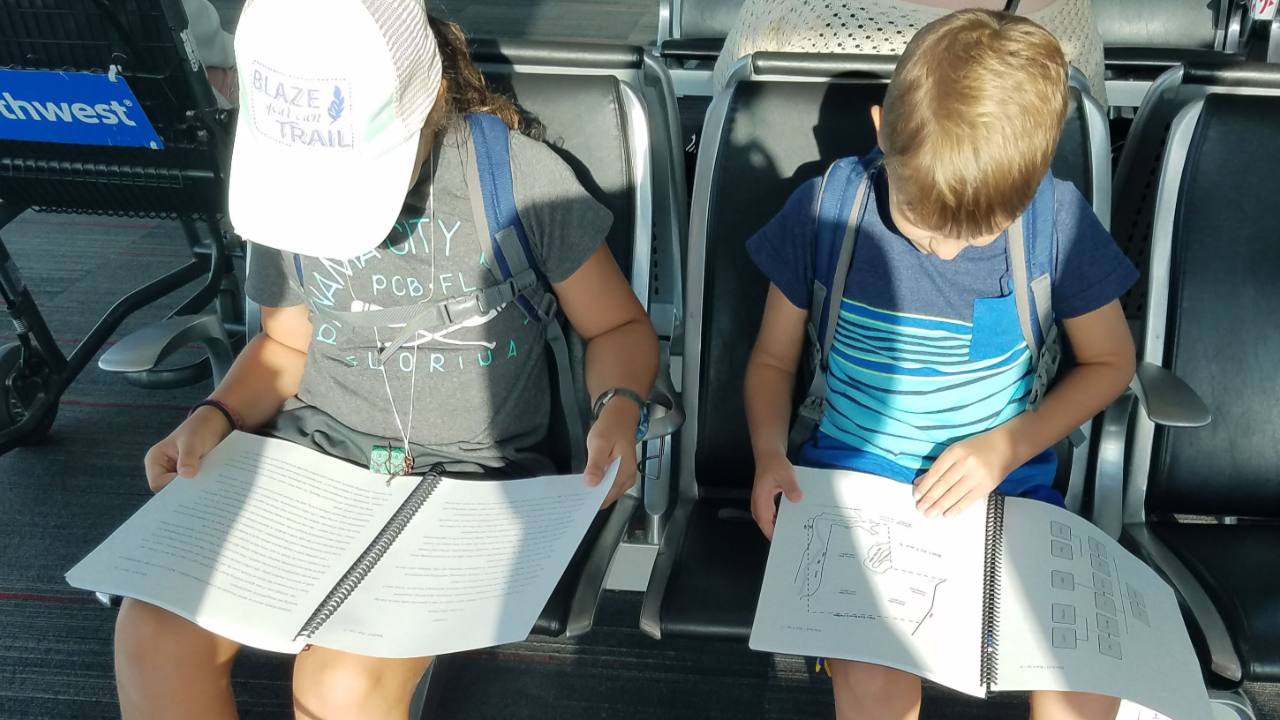The Ranch Dog

Dogs are a natural and necessary addition to any ranch family. Our dogs of choice are GSP, German Shorthair Pointer. Bud and Bess make our life better whether sitting on the porch, walking trails, or hunting. It is hard to find total commitment and loyalty in this life, but dogs offer just that in exchange for food and shelter. They give us love and protection, always joyful to see us whether the separation has been one minute or seven days.
We purchased our first dog from a breeder near Austin the same year that we moved full time to the ranch. From the first day we knew he would desire unlimited affection and return the same. When we arrived at the kennel, Bud was 8 weeks old, the perfect age for leaving mom and bonding with humans. The breeder said Bud was sitting in his lap for hours on the porch waiting for our arrival.
Five to ten minute, two a day training sessions started immediately. At this age he quickly learned the simple sit, stay, and come commands. He received not treats, only love and petting. I let him take me for short walks after the command sessions, always following him no matter which way he turned. Any time Bud turned to look for me, I would be right behind him. Now when we walk all I have to do is change directions to get an instant response. He runs to get in front of me with his nose to the ground. Now I can just point in a new direction, and he will redirect.
Training sessions build on known commands. For instance, when using the verbal ‘come’ command that Bud already knows, I move my hand down to slap my thigh. In a few days I drop the verbal command and just slap the thigh – he responds! In the same way one can add whistle commands. In the field I can now control him when out of sight, or beyond voice range. If he disappears chasing a wild boar a whistle blow brings him back quickly.
Rattlesnake training is critical for the dog’s survival and our family’s safety. In spring the weather warms luring rattlesnakes from their dens to migrate looking for mates and food after a long hibernation. I killed one to bring to a training session. When Bud caught the scent and moved in, I gave him a shock through an electronic collar. He howled and jumped back from the pain. Though painful for the dog, it’s once and done without any poison that could kill him. Unfortunately, he had to learn about skunks the hard way!
A well-trained dog is a pleasure and rarely a problem. Bud is easy to handle and knows more than one would think possible. He alerts us of humans over a quarter mile away and corners rattlesnakes at or near the ranch house, barking until I kill them. If a hunter wounds a deer, he can find it. All this service in exchange for petting and scratching.
After one year we bought Bud a companion named Bess. She was obstinate about training, seemingly uninterested and always distracted. She was fine just watching Bud go through his commands and routines. I never gave Bud treats when training because they were unnecessary. One day I took a few dog treats out and learned that Bess had every command down pat, but she expected to be paid for her work. She may be the smarter of the two.

They play together in the cool evenings, always staying close for our attention and amusement. Both dogs know that deer and cattle are to be ignored, yet they hunt wild pigs just like their human masters. Life would not be the same without them.


Responses